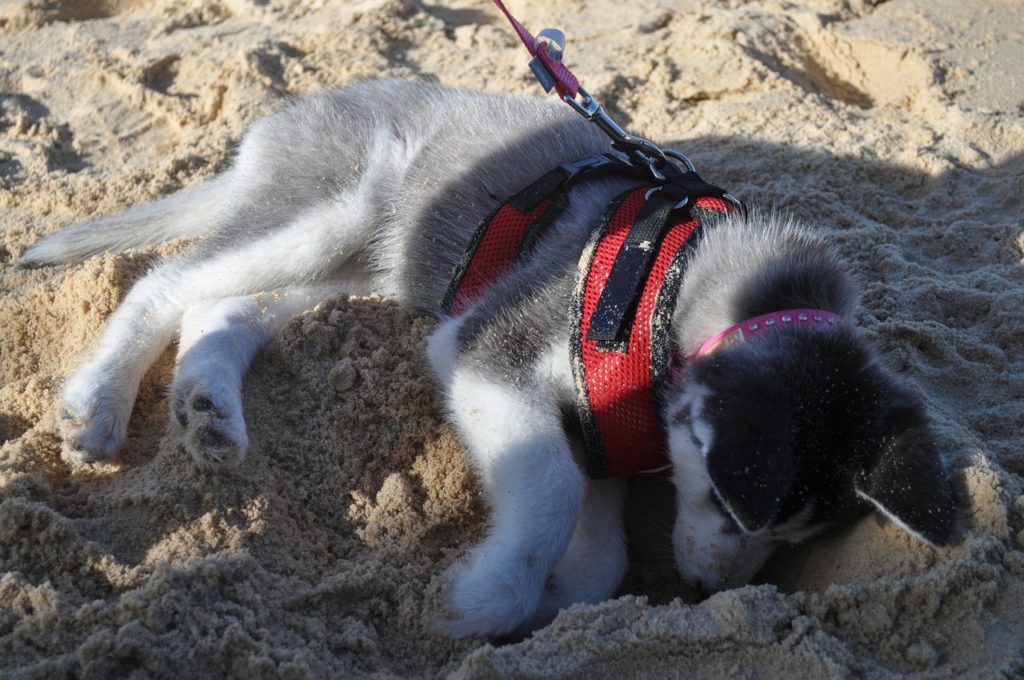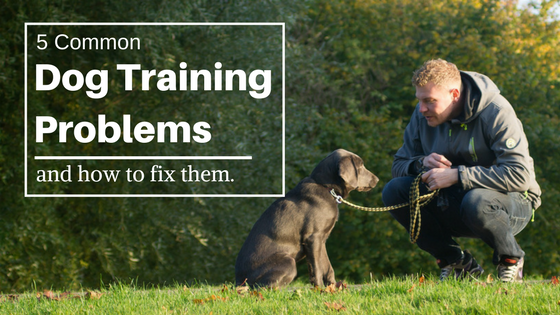As much as you love your dog, admit it. Dogs can not only push our buttons, but sometimes push us from stability to insanity. Dog training problems are inevitable. Even the most well-trained dogs can spontaneously exhibit problem behaviors. Rather than freak out when your dog misbehaves, prepare yourself for dog training problems so you can address and eliminate negative behaviors right away. A quick and appropriate response will save you headaches, and help your dog avoid developing negative habits.
1. Chewing
Puppies are the worst offenders on this one. They tend to explore the world around them with their mouths by instinct, leading to inappropriate chewing. Rather than trying to completely change the chewing instincts of your dog, here are a few steps you can take to effectively stop chewing.

First, puppy proof. If you’re going to have a puppy around, do your best to not leave temptations lying all over. Puppies are curious and love to explore new objects. Keep items like electrical cords, cleaning chemicals, and toxic foods or plants out of reach.
Then, invest in quality play time with your dog. Like teenagers, dogs can get into trouble when they are bored. Consistent play time is an important energy outlet for dogs, and it will certainly improve your relationship with your dog.
Discourage inappropriate chewing by taking the object and scolding the dog. Then, point the dog to an item that’s okay to chew on. Encourage appropriate chewing by providing your dog with safe chew toys, and praising them when they engage with said toys.
2. Barking
Stopping dog barking is our specialty. While some think it’s near impossible, you can eliminate excessive barking without the use of a bark shock collar.
First and foremost, get the BarkBlaster. It’s the best humane anti-barking solution on the market. Your dogs will stop barking in no time. The BarkBlaster can be controlled and customized from your smartphone, and provides training accountability to your dogs, even when you’re not around. See how it works in this video.
To help control barking while the dog is away from the BarkBlaster, figure out what specific stimuli cause your dog’s barking. If possible, remove the stimulus. If that’s not possible, try desensitising the stimulus. This can be done by introducing the stimulus at a distance. When the stimulus is introduced, feed your dog lots of treats. Continue to do this until the stimulus is removed. Repeat this process multiple times, as it probably won’t produce instant results.
3. Digging
Like with many of these dog training problems, you’re trying to curb a dog’s natural instincts. Digging is no exception, making it quite challenging. Some breeds are more oriented toward digging than others. Here are a couple possible training solutions.

Create a digging spot.
If possible, create a spot that’s okay for your dog to dig in. The next time you catch your dog digging elsewhere, correct them and lead them to the acceptable digging spot.
Drain their energy.
Dogs often dig to release pent-up energy. A worn-out dog is far less likely to dig. Pay attention to the energy level of your dog, and exercise him or her accordingly. For extremely energetic dogs, they may require intense playtime to curb the digging urge.
4. Not Coming When Called
If your dog doesn’t listen to “come” consistently, this should be corrected immediately for their safety and your sanity.
First, make sure you’ve intentionally trained the command. Whatever word you choose to use, being consistent is key. Use the same word or phrase every time for best results.
Be sure to practice daily. Give your pup praise and/or a reward upon compliance. Test your dog’s ability by using the command in a distracting environment, to ensure he or she will “come” no matter the circumstance.
Still struggling? You may have given the dog negative associations with the “come” command. If you primarily summon your dog in anger, don’t expect the dog to be eager to comply.
5. Separation Anxiety
Causes
If any dog training issue pulls at the heart of a dog owner, it’s separation anxiety. Unbeknownst to many owners, separation anxiety is often encouraged by the dog owner. For example, when a dog is young, many owners take the new puppy with them everywhere. Who could blame them?
Unfortunately, this gives the dog a strong sense of confidence and security found only in the owner’s presence. Remove that security and confidence, the dog experiences extreme stress.
Many owners make leaving or returning home too big of an event. When we make a fuss over leaving or returning, we reward the dog for being concerned when we leave.
If a normally well-behaved dog exhibits destructive behavior like digging, chewing, etc. while the owner is away, this could be from separation anxiety as well.

Cures
There are prescriptions available to help dogs, but they are best used as a short-term support aid in combination with good training.
From the beginning, a pup will typically whine when left alone. Most owners inadvertently reward this behavior by immediately showing sympathy every time the puppy whines. It’s important to teach our puppies to be quiet and alone for increasing periods of time.
Crate training effectively can help curb separation anxiety. Begin practicing crate time early and often. Give your dog a toy to chew on or some food to help him or her get comfortable. Make the crate a safe, comfortable place.
Check out this in-depth crate training guide for in-depth tips and instructions on crate training.
Although this can be difficult, don’t make a big fuss about leaving or returning. It’s hard not to when you care for your dog, but in doing so you may be rewarding your dog for their concern over your absence.

Of course, these are just the beginning of the many dog training problems you may encounter over a dog’s life. While it can be challenging, the accomplishment of effectively training your dog is priceless, and ultimately strengthens your relationship with your dog. Your love, compassion, and commitment to effective training will go a long way.
Do you have other helpful tips for those struggling with the training issues listed above? Tell us about them in the comments below!

